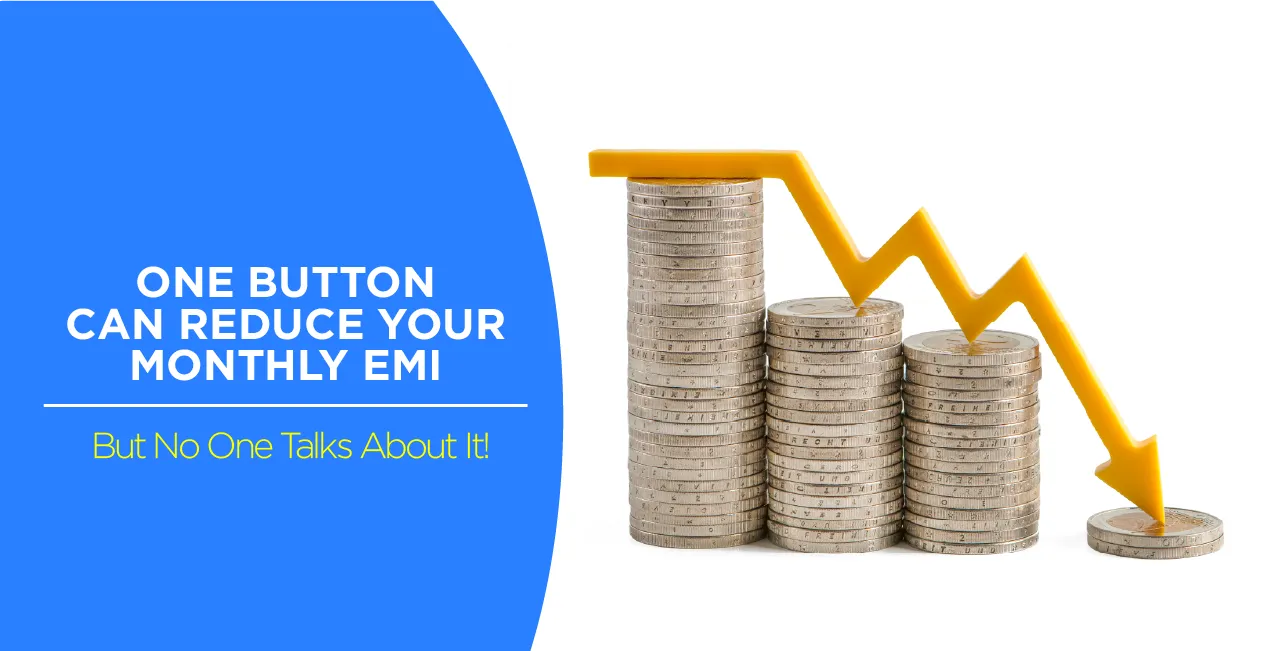
Author
LoansJagat Team
Read Time
9 Minute
21 Feb 2025
Is 2025 the Best Year to Take a Home Loan? Quick Housing Interest Rates Analysis
Raj, a 32-year-old IT professional from Pune, had been renting an apartment for years. With a stable salary of ₹80,000 per month, he often heard his parents say, “Beta, rent is like throwing money away.” But Raj wasn’t sure. Taking a home loan meant committing to 20 years of EMIs, and with interest rates fluctuating, he wondered if 2025 would be the right time to buy.
Whenever Raj scrolled through property listings, he had only one thought: “Bhai, ye toh bahut over budget hai!” But he also knew that waiting too long might make things worse. If home loan interest rates dropped to 7.5%, his EMI for a ₹50 lakh loan would be around ₹40,280, which felt manageable. But if rates shot up to 9.5%, the EMI would jump to ₹46,607—“Itna mehenga? Ye toh scam lag raha hai!”
With inflation, RBI policies, and housing demand influencing rates, Raj felt like he was playing a financial game of “Jeetenge ya phir aur intezaar karenge?” As 2025 approached, he had to decide—buy now or wait.
This article explores the evolving housing market, interest rate trends, and key factors that could determine whether 2025 is the right year to secure a home loan or if it’s better to say, ‘Abhi ruk jao bhai!’
Understanding Housing Interest Rates
It is the percentage of money that people pay to use a home loan over some time. This is the cost of borrowing money. How much you will pay in a home loan interest depends on various factors like the type, size, and duration of the loan as well as the size of your down payment and your credit history.
Why Do Interest Rates Vary?
The interest rates in India show volatility because of multiple factors, including economic development and inflation rates combined with RBI guidelines. Higher inflation levels drive interest rates upwards, increasing the debt cost.
Types Of Home Loan Interest Rates
FIXED INTEREST RATE
- In this, the rate stays the same for the entire duration of the loan or a set period.
- This allows borrowers to enjoy consistent EMIs (Equated Monthly Installments), simplifying financial planning.
- Nevertheless, these rates are usually higher than floating rates because they do not take advantage of any decreases in market rates.
Floating Interest Rate
- A floating interest rate varies based on market conditions and movement in external reference points such as the RBI's repo rate or MCLR (Marginal Cost of Funds Lending Rate).
- Borrowers enjoy reduced EMIs during falling interest rates but must also prepare for potential hikes.
- Typically, floating rates begin lower than fixed rates.
Current Home Loan Interest Rate Trends in India
As of February 2025, India’s home loan market is witnessing notable shifts due to the RBI’s recent monetary policies and economic conditions.
NEW RBI POLICY IMPACT ON HOME LOANS
On 7 February 2025, the Reserve Bank of India (RBI) lowered the repo rate by 25 basis points (0.25%) to 6.25%. This was the first such cut in the past five years to uplift economic activity and encourage borrowing.
Ongoing Home Loan Interest Rates by Banks (February 2025)
Bank | Interest Rate (P.A.) | Effective Date |
Sbi Home Loan | 8.25% onwards | February 15, 2025 |
Hdfc Bank | 8.75% onwards | February 7, 2025 |
Icici Bank | 8.75% onwards | February 7, 2025 |
Bank Of Baroda | 8.40% onwards | February 12, 2025 |
Punjab National Bank | 8.40% onwards | February 1, 2025 |
(Interest rates may vary depending upon the loan amount, credit score and tenure.)
How Interest Rate Changes Affect Emi
Raj plans to take a ₹50 lakh loan for 20 years. Let’s see how different rates impact his EMI (Equated Monthly Installment):
Interest Rate | Monthly Emi | Total Interest Paid | Total Loan Repayment |
7.5% | ₹40,280 | ₹46.67 lakh | ₹96.67 lakh |
8.5% | ₹43,391 | ₹54.14 lakh | ₹1.04 crore |
9.0% | ₹44,986 | ₹58.86 lakh | ₹1.09 crore |
9.5% | ₹46,607 | ₹63.78 lakh | ₹1.14 crore |
- A 1% decrease in interest rate (from 9.5% to 8.5%) can save Raj around ₹3,216 per month and ₹9.64 lakh in total interest.
- If rates fall to 7.5%, Raj’s savings could be ₹17.1 lakh compared to a 9.5% loan.
How To Get the Lowest Home Loan Interest Rates in India
1. Maintain A High Credit Score
A credit score of 750 or above enhances your eligibility for lower interest rates. To maintain and get a high credit score:
- Timely Payments: Ensure that all EMIs and credit card payments are made on or before the due date.
- Credit Utilisation Ratio: Maintain your credit usage at less than 30% of your available limit.
- Keep Credit Inquiries Low: Do not make frequent loan or credit card applications in a short duration.
- Regular Credit Report Checks: Check your credit report for errors and fix them immediately.
2. Compare Offers From Multiple Lenders
Interest rates can vary between banks and housing finance companies. Utilise online platforms to compare current rates:
Bank | Interest Rate (P.A.) | Processing Fees |
Sbi Home Loan | 8.25% - 9.20% | 0.35% of the loan amount plus GST |
Hdfc Bank | 8.75% onwards | Up to 0.50% of the loan amount or ₹3,000 plus taxes |
Icici Bank | 8.75% onwards | 0.50% of the loan amount plus applicable taxes |
Bank Of Baroda | 8.40% onwards | Nil |
Punjab National Bank | 8.40% onwards | Nil |
3. Go For a Shorter Loan Tenure
Shorter loan tenures often come along with lower interest rates and reduce the total interest outflow.
Example: For a loan of ₹50 lakh:
20-year term at 8.5%: EMI = ₹43,391
15-year term at 8.3%: EMI = ₹48,636
4. Make A Higher Down Payment
Paying more than the usual 20% down payment lowers the amount borrowed and, therefore, the interest payments. In addition, lower loan-to-value loans can be financed at better interest rates.
5. Apply With A Co-Applicant
Including a co-applicant, especially one with a stable income and good credit history, can improve loan eligibility and secure better interest rates. Some lenders offer concessional rates for female co-applicants.
6. Leverage Existing Banking Relationships
Long-term customers with a satisfactory record of transactions can negotiate favourable terms or lower processing charges from their banks.
7. Explore Government Schemes
Schemes such as the Pradhan Mantri Awas Yojana (PMAY) provide interest subsidies to qualified first-time homebuyers, lowering their interest burden.
Raj discovered that PMAY provides first-time homebuyers with a government-backed interest subsidy. Through PMAY, Raj received a subsidy of ₹2.35 lakh to decrease the amount of his home loan.
Is 2025 The Ideal Year to Avail of a Home Loan?
- CURRENT TRENDS: RBI's interest rate drop should cause home loan rates to go down more. According to economic analysts, home loan rates will decrease another 0.50% to 1% by mid-2025, when inflation stays under control.
- MARKET OUTLOOK: If interest rates go lower, EMIs will decrease in cost, so 2025 will be a good time to buy homes.
- RISK FACTORS: If inflation increases or world economic conditions change, RBI might stop or undo rate cuts, and the interest rates will be higher.
Raj’s Dilemma: Buy Now or Wait?
Like Raj, many buyers must decide:
- Act now if interest rates are already within a comfortable range.
- Wait for further cuts, but risk rising property prices in high-demand areas.
Conclusion
As Raj weighs his options, the question remains: Is 2025 the best year to take a home loan?
With the RBI’s recent rate cuts and the possibility of further reductions, home loan interest rates might become more affordable in the coming months. If inflation stays in check and economic conditions remain stable, prospective buyers could benefit from lower EMIs and reduced overall interest costs.
But holding out for even lower rates has risks. Housing prices in central locations could go up, negating the advantages of falling interest rates. Also, if world economic uncertainties cause inflation to increase, RBI might stop or even reverse its rate cuts, leading to higher prices for future loans.
For Raj—and those in his shoes—the choice is one of personal financial preparedness and market dynamics. If the rates are already low, fixing a home loan today may be a good idea. But if the market indications suggest more decreases, holding on for another few months could mean more savings.
Ultimately, Raj has to choose: "Ghar lena hai ya aur sochna hai?"
FAQs
Is applying for a home loan in 2025 a feasible option??
Yes, 2025 looks good because the market thinks a recent repo rate reduction by the RBI to 6.25% may cause home loan interest rates to fall. However, personal financial security must also be taken into account.
What is the prevailing home loan interest rate in India in 2025?
As of early 2025, interest rates are between 8.25% and 9.50% per year, varying with the bank, credit score, and loan duration. It is always good to compare rates across several lenders before applying.
Should I opt for a fixed or floating rate of interest for my home loan in 2025?
If you foresee rates falling even lower, the floating rate would be suitable. But if stability is your concern, a fixed-rate loan means stable EMIs.
What is the lowest CIBIL score for a home loan in India?
The majority of banks need a CIBIL score of 750 or more for competitive interest rates. A lower score can avail of a loan but at increased rates.
What is the highest tenure for a home loan in India?
The majority of banks provide a home loan for 30 years, which gives lower EMIs and higher total interest paid.
How much is the down payment for a home loan?
Usually, 75% to 90% of the property is financed by banks. Borrowers have to arrange 10% to 25% as a down payment.
Can I shift my home loan to another bank for a lower interest rate?
Yes, you can consider a home loan balance transfer if there is a lower rate offered by another lender. But weigh the cost of processing fees and transfer charges against the move.
What are the hidden charges in a home loan?
Processing costs (range from 0.5 % to 2% of the loan amount);
Fees for legal work and valuation
Stamp duty and charging of registration
Charges for prepayment and foreclosure (fixed-rate loans)
In what way does inflation impact home loan interest rates?
Increasing inflation can lead the RBI to raise interest rates to bring the economy into balance. The opposite end of the spectrum would be lower borrowing costs as lower inflation.
How long does it take for a home loan to get approved in India?
It generally takes from 7 to 15 days to process the loan approval, the approval of which is subject to document verification, CIBIL score, and processing times by the lender.
About the Author

LoansJagat Team
‘Simplify Finance for Everyone.’ This is the common goal of our team, as we try to explain any topic with relatable examples. From personal to business finance, managing EMIs to becoming debt-free, we do extensive research on each and every parameter, so you don’t have to. Scroll up and have a look at what 15+ years of experience in the BFSI sector looks like.

Quick Apply Loan
Subscribe Now
